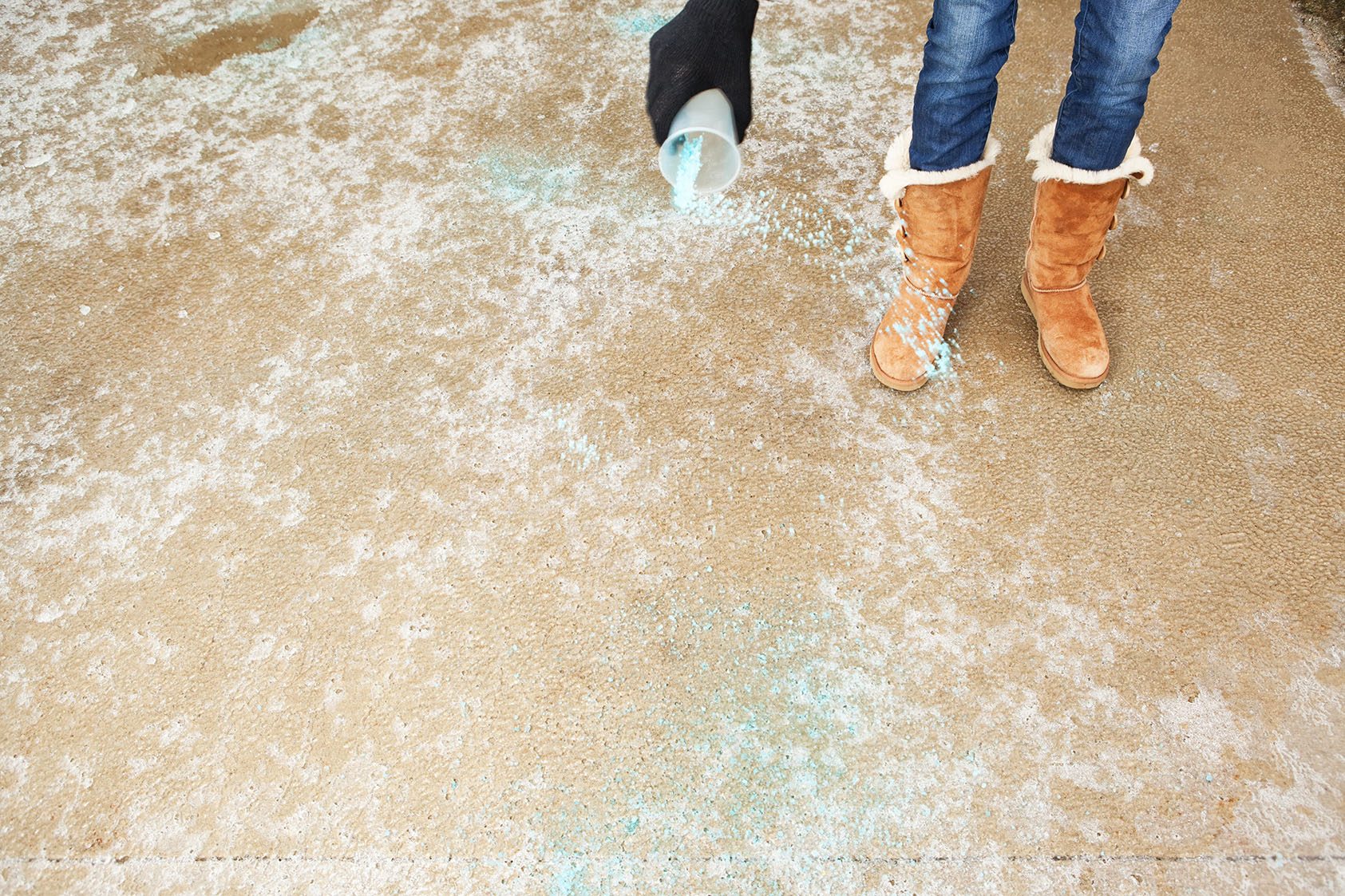With winter around the corner, you may be thinking about stocking up on ice melt or rock salt for your driveway. If snow and ice are a way of life for you each winter, understanding how these work products can help you make an informed buying decision while keeping your property as slip resistant as possible.
What Is the Difference Between Ice Melt and Rock Salt?
Rock salt and ice melt are both designed to melt through snow and ice on driveways, sidewalks and other surfaces. Both are sold as bagged pellets to be sprinkled across icy surfaces, lowering the freezing point of water so ice melts and new ice takes longer to form. It also makes ice easier to remove with a shovel or pick. The differences between the two products come down to chemical makeup and performance in different temperatures.
Rock salt, also known as halite, features naturally occurring chunks of pure sodium chloride, the chemical name for salt. Rock salt helps keep ice from forming down to about 5 degrees F.
Ice melt also contains sodium chloride, along with other chemicals like calcium chloride and magnesium chloride. The exact proportions of these chemicals varies by product brand. Most ice melt products, with their calcium chloride additives, will melt ice effectively in temperatures as cold as -10 F.
Ice Melt and Rock Salt Pros and Cons
- Ice melt usually melts ice faster than rock salt, and is effective against snow and ice down to lower temperatures.
- Plain rocks salt is often cheaper, but its harder crystalline pellets can be more damaging to concrete, decks and patios.
- Both ice melt and rock salt are salts, and as such can cause corrosion to concrete and metal.
- Neither product has been proven to cause more corrosion damage than the other. So whether you use ice melt or rock salt, apply it sparingly, and consider mixing it with sand for extra traction. This will let you use less, minimizing their damage.
- Both products can irritate pets’ paws.
Note: Wash or wipe your pet’s paws when they come inside, being careful to remove all salty residue. Some ice melt products claim to be pet friendly due to a coating of calcium magnesium acetate on the individual crystals. Trouble is, this coating melts away after the product is applied, leaving pets’ paws as vulnerable as ever. Speaking of, you might appreciate these best pet-safe ice melts to protect your furry friends this winter.
When To Use Ice Melt or Rock Salt
- If your temperatures routinely drop below 5 F, go with ice melt
- For areas where temps below 5 F are rare, simple rock salt is fine.
- Choose a product with a high proportion of calcium chloride, which lowers water’s melting point more than any of the other ingredients.
ⓘ





















